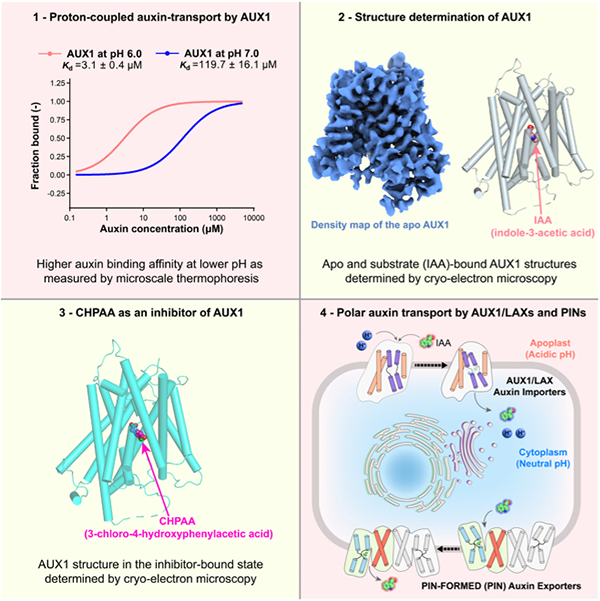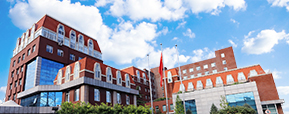Chinese Scholars Uncover Auxin Polar Transport Mechanism in Plants
Under the support of the National Natural Science Foundation of China (Grant Numbers: 32322041, 32321001, W2412029 and 32471279), a research team led by Professor Linfeng Sun, Associate Professor Xin Liu, and Professor Shutang Tan from the Division of Life Sciences and Medicine, University of Science and Technology of China, has elucidated the polar transport mechanism of the essential plant hormone, auxin, by reporting the three-dimensional structure of an auxin influx transporter AUX1 in Arabidopsis thaliana. The study, titled “Structural insights into auxin influx mediated by the Arabidopsis AUX1,” was published online in Cell on May 15, 2025. The paper is available at: https://www.cell.com/cell/fulltext/S0092-8674(25)00463-5.
Auxin is the first discovered plant hormone and plays a central role throughout the plant life cycle, regulating processes such as root and shoot formation, stem and leaf growth, and phototropic and gravitropic responses. Notably, auxin transport in plants is not random but highly directional, forming concentration gradients that govern development and environmental responses, such as the classic “sun-tracking” behavior of sunflowers The AUX1/LAX family of transporters in plants mediates auxin influx from the apoplast into the cytoplasm and is crucial for this polar transport, though its transport mechanism remained unclear.
The team focused on AUX1 in Arabidopsis thaliana, which is the first identified auxin influx carrier, and established a radiolabeled auxin uptake assay and used biochemical approaches to confirm that AUX1-mediated auxin binding and transport are pH-dependent and can be inhibited by small molecules such as 1-NOA and CHPAA. Using cryo-electron microscopy, they resolved the structures of AUX1 in three distinct states: the ligand-unbound apo-state, the natural auxin IAA-bound state, and the inhibitor CHPAA-bound state, thus providing the first structural view of the AUX1/LAX family and critical insights into the auxin binding and transport mechanisms. CHPAA is a widely used specific inhibitor of auxin influx, was found in the structure to bind AUX1 at a site adjacent to that of IAA but in a distinct manner, offering a molecular basis for its inhibitory mechanism. The team collaborated with Professor Lizhe Zhu’s team from the Chinese University of Hong Kong (Shenzhen) to perform molecular dynamics simulations, and confirmed the importance of key residues in auxin recognition and proton-coupled transport of AUX1.
Based on these results, the researchers proposed a transport model in which AUX1 mediates auxin influx in a proton gradient–dependent manner. This study has revealed for the first time the molecular basis of auxin import mediated by the AUX1/LAX family transporters in plants, thus filling a critical gap in the understanding of polar auxin transport and the regulation of plant growth and development. It also provides both structural basis and potential targets for future agricultural applications.

Figure. AUX1-mediated auxin import mechanism.
Contact Us

National Natural Science Foundation of China
Add: 83 Shuangqing Rd., Haidian District, Beijing, China
Postcode: 100085
Tel: 86-10-62327001
Fax: 86-10-62327004
E-mail: bic@nsfc.gov.cn
